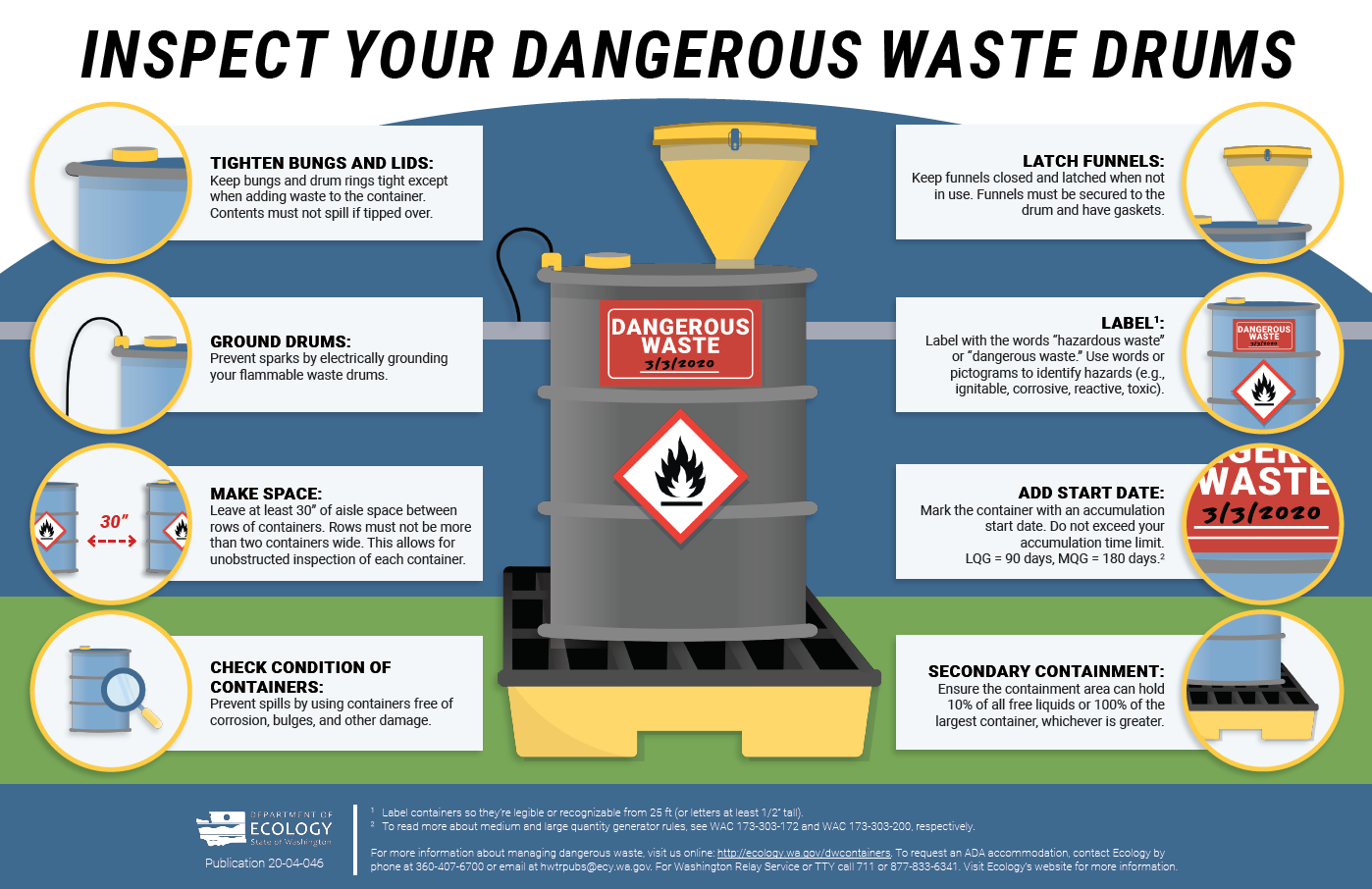Small Changes Make a Big Difference
Most businesses generate some type of dangerous waste, also known as hazardous waste, which can be harmful to public health and the environment. All businesses are responsible for managing their dangerous waste and are subject to rules from the Washington State Department of Ecology and local government. Batteries, electronics, and lights/lamps are all examples of common dangerous wastes that are required to be properly handled.
Small quantity generators, or SQGs, are businesses or non-profits that generally produce less than 220 pounds of dangerous waste each month, and accumulate less than 2,200 pounds at any time, Businesses producing higher levels of dangerous waste are medium or large quantity generators, and must follow much more extensive Ecology regulations.
SQGs are exempt from Ecology regulations when they follow these three basic steps to responsibly manage dangerous waste:
For a short video on the three steps, click here or view above.
Step 1: Determine if your business has dangerous waste - and how much
If you don’t have a use for something and it will be discarded, it’s a waste. If it's a product that will be used, it may not be waste. Businesses should learn the difference between wastes and products.
Even discarded cleaning products and light bulbs can be dangerous waste. Start by taking a look at the materials you use and the wastes that remain. If you have products labeled “DANGER,” “FLAMMABLE,” “WARNING,” or “POISON,” and they become a waste or are mixed into a waste — you probably have a dangerous waste.
Dangerous waste is very common, and most businesses produce some. Here are some examples (click below to expand the list):
Step 2: Handle and store waste safely
Dangerous waste needs to be properly stored and labeled before disposal. Improper handling and disposal can result in spills, safety violations, and expensive clean-up costs.
Click here for a complete guide on dangerous waste storage.
Click on the image above to view full-size.
Step 3: Recycle or dispose of SQG dangerous waste
Dangerous wastes cannot be disposed of with your general trash – they must be sent to a properly licensed facility for recycling or disposal. The following companies provide dangerous waste disposal and recycling for SQGs in Clark County. Services and rules vary between waste companies.
Contact representatives to find the best fit for your business’s dangerous waste:
Contact us:
For more information or to request a visit, our specialists can be contacted by email or phone, or by completing our online contact form.
